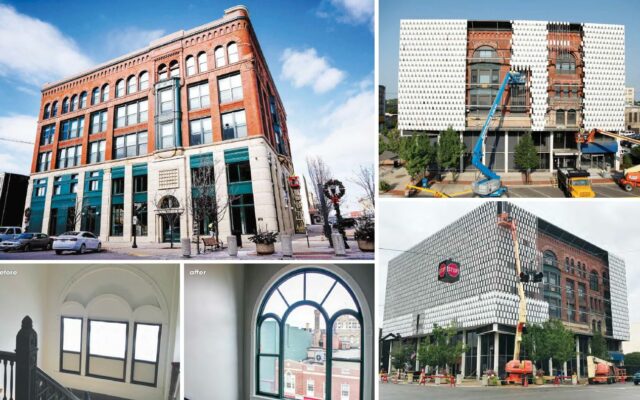Bay City Building Receives Governor’s Award for Historic Preservation

Seven Michigan preservation projects, including one in Bay City, have received the Governor’s Award for Historic Preservation.
“It’s an honor to recognize the recipients of the Governor’s Awards for Historic Preservation,” said Lt. Gov. Garlin Gilchrist II. “These projects are the result of partners coming together and demonstrating the resiliency, tenacity, innovation, and long-term commitment to telling Michigan’s story that truly define our state and our residents. I’m excited that new projects like these will be enabled very soon with the launch of the next round of state historic tax credits.”
An award for the former Crapo Building’s rehabilitation into The Legacy in downtown Bay City was presented to 213 Development LLC, Quinn Evans Architects, and Spence Brothers Construction. Their work on the building, which opened in 1890, included removing a metal screen over the upper brick exterior. Extensive interior work was done to construct residential units with new mechanical systems, floorplans, restored tin ceilings, refinished historic doors, and the adaptive reuse of two bank vaults. The total investment was $12 million.
Historic preservation awards were also given to projects in Battle Creek, Detroit, Kalamazoo, Leland, Manistee Township, and Ypsilanti.
“Historic resources and archaeological sites tell us about the past and help us define Michigan’s unique identity. Their preservation is vital to Michigan’s present and future as they contribute to vibrant communities and our understanding of the past,” said Deputy State Historic Preservation Officer Martha MacFarlane-Faes. “Each year during National Historic Preservation Month the Governor’s Award program gives us an opportunity to recognize standout historic preservation efforts across the state, exemplifying the collaboration and deep impact preservation can have in Michigan communities. This year’s diverse group of awards has inspired additional preservation activity and economic investment, and illustrate projects that represent preservation best practices.”



